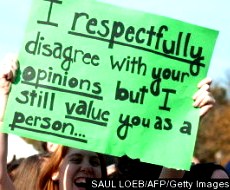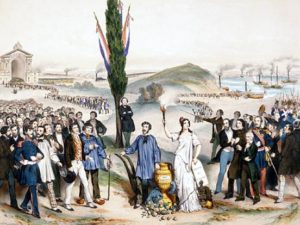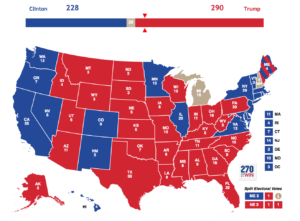(Saving Democracy Series: this post focuses on how unfair, and undemocratic the minority vote of a President can be. Two ideas are summarized on how to reform the Electoral College which are most often proposed by scholars and political leaders, electors allocated by congressional districts or, The National Popular Vote Interstate Compact)
With the kickoff of 2020 presidential campaigns by 23 democratic candidates and one GOP president, we are reminded of how our democracy failed to elect the popularly voted candidate, Hillary Clinton in the last presidency contest. The 2016 presidential election results were: Donald Trump receiving 290 electoral votes to Hillary Clinton’s 228, yet she won the popular vote by almost 3 million votes. That event continues to cause protests, fear, anxiety and sense of injustice across the country. The Electoral College was developed by the foundering fathers as a way to make the Office of the President a powerful branch of government, not beholding to the majority of representatives in Congress. They developed a state based election system where presidential electors were allocated by state for each senator and congressional representative. Including the 2016 election, there has been 6 times in U.S. history that a president was elected who did not receive the most popular votes. A minority elected president is viewed by many people as illegitimate. While the minority candidate has been constitutionally elected, the candidate does not have the majority mandate necessary to execute the responsibilities of the office outlined in the Constitution.
This author asked his mother when he turned 18 years old, ‘how do you vote for President?’ she replied, ‘I think of the President like a child with a hammer, how much damage can he do, so I vote for the least damage.” Our POTUS 45 must have listened to her as he is hammering away at a variety of democratic institutions, alliances and principles.
Why do we have the Electoral College anyway? The founding fathers had just come from a monarchy based government, so they did not want to repeat a system of a proclaimed leader (everyone wanted George Washington to be President at the time) with the leader appointing the next in succession. Another approach under consideration was to have a national leader based on representational majority in Parliament. Yet, they believed in balancing the powers of Congress and the Executive branch. Plus, the founders were looking for a way to motivate the President for good behavior by allowing a second term. If the President were elected by Congress it would have to be for one term, or he would become a tool of the majority in Congress. They did not want a direct popular vote because they were concerned that a national constituency could not be developed with so many regions and states likely to have favorite son candidates. James Madison, Constitution Convention recorder and leader, was looking for a compromise because southern states felt they would lose out in a national constituency with blacks being 3/5 of a citizen to vote. So, a compromise was established to have a set of electors voted on by the people in each state based on popular vote. These electors that would then vote in a separate Electoral College vote in December with ballots read in a session of Congress. If there was a tie 269 – 269 of electors between candidates, then Congress would vote on who would become President. In our history there have been 5 Presidents who have not won the popular vote but have won by electors.
Why is this a problem? The popular will of the people is thwarted. A major issue is that the Electoral College is not one person – one vote as identified in our Constitution for a representative democracy. A vote in California with 55 electoral votes and 8,458,000 citizen votes means that one electoral vote represents 153,781 citizens. In Wyoming, with 3 electoral votes and 230,197 citizen votes means that one electoral vote equals 76,732 citizen votes. A voter in Wyoming enjoys twice as powerful citizen/electoral vote than a citizen in California. The balance of power in the Electoral College swings to mostly sparsely populated inland states deciding who our president will be. In the 2016 election inequitable voting power certainly is evident looking at an electoral map (right click on image to enlarge):
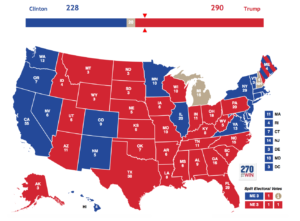
Voting power inequity creates great frustration and anger. In the days after the November 2016 election, there were protests in 37 cities across the country against the president elect due to the injustice of the non-popular vote. All our representative government functions are based on majority vote from local city councils to state legislatures and the US Congress. It only makes sense to have a popular vote for president in the modern era. With growing economic inequality and divisive politics particularly between inland and coastal people a fair vote for president would go a long way toward building a united country.
Next steps:
Why not just have a direct popular vote? This would be a good solution except that the Constitution needs to be changed in a two-step process by creating an amendment followed by ratification. The US Congress can create an amendment by a two-thirds vote of the House and Senate or two thirds of the state legislatures. The proposed amendment then must be ratified by three-fourths of the state legislatures in a time frame approved by Congress. This is a long and difficult process as 11,539 amendments have been introduced in Congress since 1789 and 27 have become part of the US Constitution.
How about apportioning electors by congressional district? We already portion congressional districts by population which is updated each decade by the Census Bureau. The congressional district approach provides some equity for citizen to elector representation – though it will not fix the inequality completely due to the two senate electors. Maine and Nebraska apportion their electors by congressional districts today, with their two senatorial electors representing a statewide vote. The congressional districting approach would be fair and take care of 80 % of the vote inequity issue. Plus, candidates would need to focus their campaigning on congressional districts not the whole state for a winner take all result. For example, California rarely sees presidential candidates from either party for the presidential race because it has gone for the Democratic candidate in the last 6 elections. Candidates would benefit by campaigning in key congressional districts in even majority states to gain support of electors by congressional districts which may not vote with the majority of the voters on many issues or candidates.
The best approach would be to have congressional districts mapped by an independent commission as California does to ensure that the district is open to diverse political viewpoints. By establishing congressional districts as the key representative unit with fair boundaries for inclusion of multiple points of view we might see more dialog at the local level. The increased dialog will induce more consensus building and possibly break the grasp of incumbents who are re-elected 93 % of the time. State legislatures can decide on their manner of apportioning electors – so we could build a national census to have the states enact changes by the 2024 election.
Professors Akhil and Vikram Amar propose a National Popular Vote Interstate Compact. Whereby, states legislatures would agree to vote their electors for the winner of the popular vote. This compact would take effect when at least 270 electoral votes would be in the Compact. To date fifteen state legislatures have ratified this Compact, swing and inland statues are reluctant to make the switch because they may lose some of their power in electing the next president. Yet, an analysis of advantages to either party are even when viewed over elections back to 1880. Both major parties back the Compact with former senators and congressman on a steering committee supporting the legislation in state houses. Both approaches: congressional district electors or the Popular Vote Interstate Compact are fair to both major parties and third party candidates.
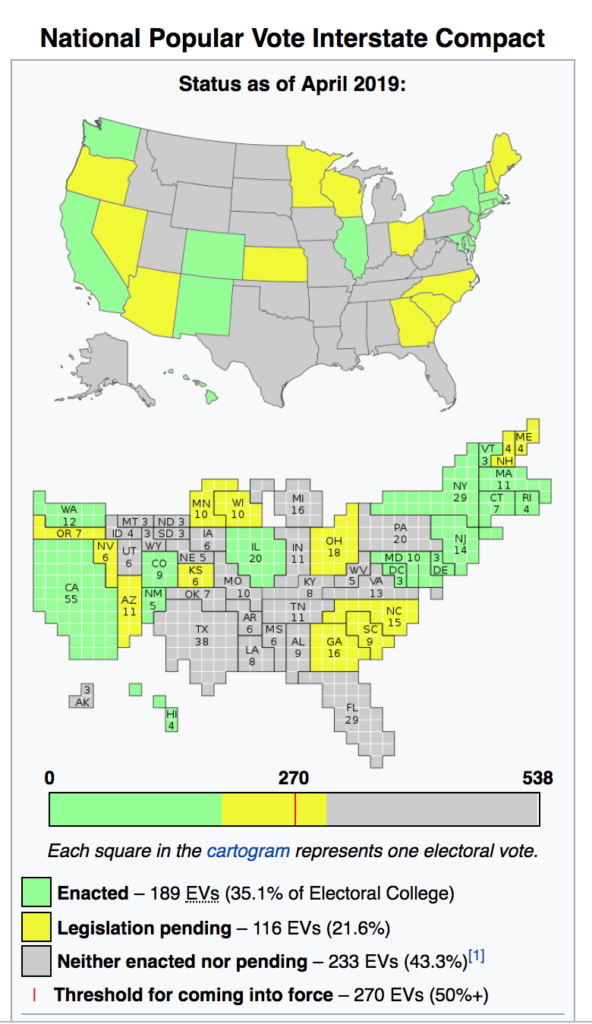
A way to get the reform of the Electoral College off of dead inertia would be to file a suit in federal court seeking a finding that the present system violates one man – one vote provision of the Constitution, thereby forcing the states to redistribute their electors by another method preferably by congressional district with independent commission mapping or Compact. Persuading additional states to pass the Compact law where legislation is pending like New Mexico, Arizona, Oregon, Minnesota, Wisconsin, Kansas, Georgia, South Carolina, North Carolina, New Hampshire and Maine would gain the necessary 270 electoral votes for the Compact to take legal effect.

